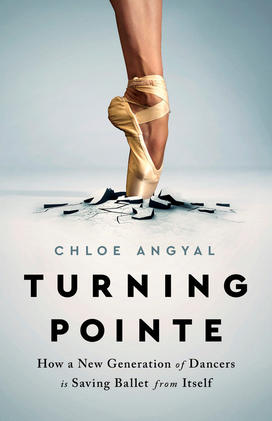Chloe Angyal ’09 Takes Ballet to Task
Chloe Angyal ’09 was coming into her own as a feminist when she began to question her love of ballet. “I just could not reconcile these two things,” she says. “The worldview that I was developing as a feminist and what seemed to me to be pretty obvious, straightforward, limited roles — literally — for women, and [ballet’s] vision of womanhood.”
Turning Pointe: How a New Generation of Dancers Is Saving Ballet from Itself Angyal’s debut book, is an expansion of that criticism. The work is less a history of ballet and more a look into the art form’s future. As Angyal writes, “If ballet is going to continue to be worth our time, It must evolve.”
Raised in Australia, Angyal grew up dancing — ballet, modern, jazz. But, she says, “Between my lack of consistent classical training and the ways that puberty transformed my body, it was made very clear to me that I did not have what it took to be a serious ballet dancer.”
When Angyal arrived at Princeton she wanted to keep dancing and joined eXpressions Dance Company. She also majored in sociology. “This discipline gave me x-ray vision,” she says. “It’s intoxicating to feel like you are gaining that level of understanding into how the world around you functions, and I just fell in love with that feeling.”
After Princeton, she went on to get a Ph.D., writing her dissertation on sex and power in romantic comedies, “the irreconcilable tension between feminism and this sort of feminized media product” she notes. Now she’s turned that x-ray vision on dance.

The seed of the idea for Turning Pointe was planted while Angyal was working at the Huffington Post. “I started writing about ballet as a workplace, and approaching dancers as workers,” she says. “What it’s like to be a union rep at a ballet company, or what it’s like to dance with your husband or wife at a ballet company, or what it’s like to be the only Black girl at your office where your office happens to be a ballet company.” At one point, when writing a story about the status young boy dancers receive within the ballet world (prized and privileged due to scarcity), juxtaposed with the bullying they receive outside of it (often relentless), Angyal realized she had a book on her hands.
Turning Pointe takes the principles of ballet and exposes them as social injustices. “Ballet students learn from these unwritten rules that the perfect dancer is obedient and obliging,” she writes. “She is white, and if she is not wealthy, then she at least moves as if she is. And she adheres to ballet’s strict gender binary, which determines what training gear and costumes girls and boys and men and women wear, what shoes they put on their feet, what roles they are cast in, and what steps they perform.”
Angyal’s belief is that ballet must change, and her book maps out recommendations for exactly how meaningful change can happen; underscoring that change is imperative if ballet as an artform is to survive. With respect to ballet classes for young dancers, Angyal’s call to action is the implementation a diverse teaching workforce at ballet schools, along with affordability of classes. She also pushes for cross-gender casting, the normalization of teachers asking for permission before touching a dancer to make a correction, and respecting the dancers health and body over the unrealistic and often unhealthy physical standards that ballet currently demands. “Finally, dance educators must be willing to tell the whole story of the Great Men of ballet,” she writes alluding to choreographers like George Balanchine. “The ugly truth of how they treated their dancers as well as the beauty of the choreography they created.”
With an eye toward professional dance companies she prescribes a long list of changes including a commitment to diversity — of body types, of gender expression, of abilities, of race and ethnicity — and a commitment to staging work by underrepseresented and emerging choreographers. “Companies should think expansively about what kinds of stories are missing from their stages, what kinds of human experiences they are failing to represent, and which audience members they are excluding as a result,” Angyal writes.
“The time for talking, if it’s not over, it’s nearly over,” she says. “Now it’s time to do something.












No responses yet